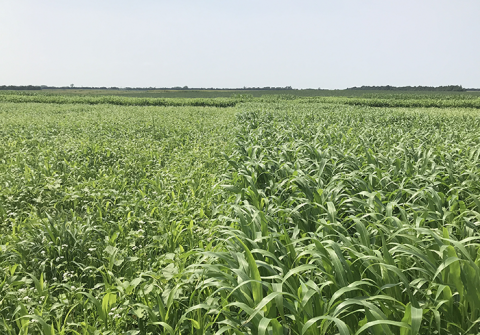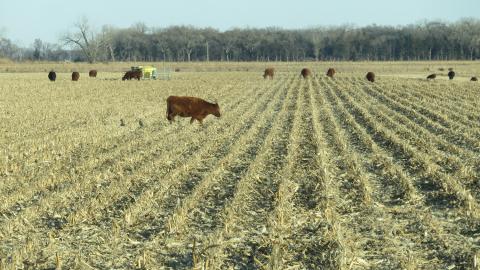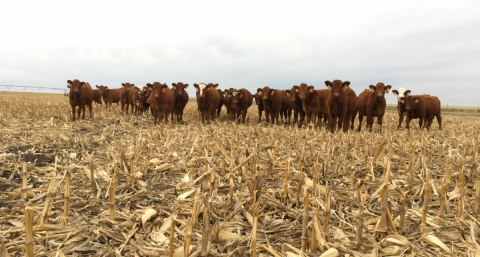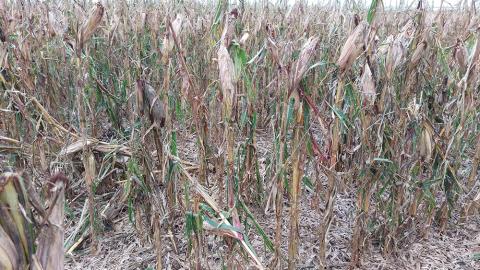Effect of Row Spacing on Switchgrass Yield and Nutritive Value
March 14, 2019
This study was conducted from 2010 to 2015 to evaluate effects of row spacing on switchgrass forage yield. It compared two varieties: ‘Shawnee’ an upland ecotype, and ‘Kanlow x Summer HP1 NETO2 C1’, an experimental lowland ecotype later released as ‘Liberty’.
Cover Crop Grazing: Impacts on Soils and Crop Yields
January 22, 2019
Results from a three-year study in rainfed and irrigated no-till cropping systems in Nebraska suggest that moderate cattle grazing of cover crops may not negatively impact soil properties and crop production.
Native Warm-Season Grass Management and Planting Decisions for Alternative Forages
January 9, 2019
One of the most important drivers of productivity and cost effectiveness of annual forages is planting date. Having realistic planting date expectations is one key to proper species selection.
Nutrient Removal by Cows Grazing Corn Residue
November 5, 2018
Nutrient removal by cows grazing corn residue may not be as much as you might think. Here a livestock and a forage specialist break down the numbers and look at removal rates for organic matter and minerals.
The Crop Residue Exchange Links Growers and Grazers
October 10, 2018
The Crop Residue Exchange is an interactive online tool to help crop and cattle producers connect and develop mutually beneficial agreements to use crop residue for grazing. A new feature allows producers to also list forage cover crops for grazing.
Cover Crop Considerations Following Late-Season Hail Storms
August 24, 2018
Cover crops offer a number of benefits in fields sustaining late-season hail damage, but should be planted soon to provide sufficient time for growth. A guide covers various cover crops and their use, seeding rates, and seeding method.
Reducing Nitrate Concerns When Grazing Forage Cover Crops
July 22, 2020
Nitrate toxicity can be a concern when planting cover crops for forage in hail-damaged crop fields. With proper management of haying and grazing, the risk can be reduced.
Considerations for Forage Cover Crops after Hail in Corn and Soybean
July 9, 2018
If you were hit hard by hail and need to cover your fields, forage cover crops can provide an opportunity for haying or grazing as well as a protective plant layer. Plant selection is a key factor in successfully managing production.







